Asked Porsche Japan’s Product Manager Directly About the New 911 (992)
公開日:2019.06.26
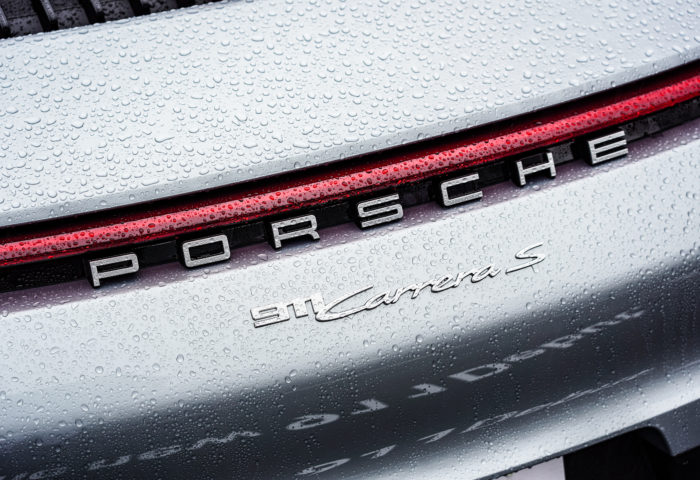
Today, I’m sharing a report written by my husband. Please take a look if you’re interested.
The other day, at the Porsche Sportscar Together Day at Fuji Speedway, I had the chance to meet Alex, Porsche Japan’s product manager, for the first time. My wife had met him a few times before, but this was my first encounter, and I had been eager to meet and talk with him.

This time, Alex gave us a direct explanation of the new 911’s design and internal structure while we looked at the actual car, so I’d like to share some of that here.
New 911 (992)
Rear Design
It was my first time seeing the actual car, and my first impression was:
It looks way cooler than the photos!
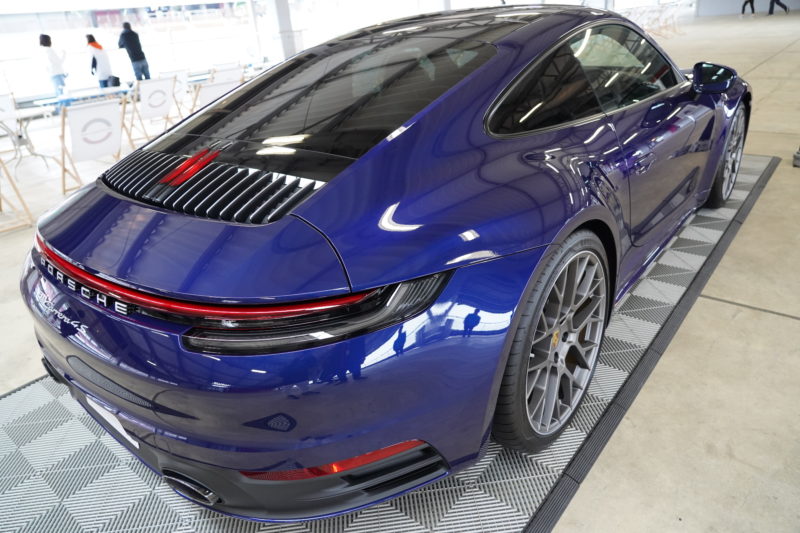
Photos online gave me the impression of a slightly chubby, almost “metabolic syndrome” 911 (laughs), but seeing it in person, that’s not the case at all.
The rear is beautifully composed, and when viewed at eye level, the surfaces flowing from the roof to the rear glass/C-pillar and then to the rear wing are almost flat, making the whole car appear low and poised. I had imagined a more rounded, bulky rear, but that’s definitely not true.
On the other hand, when crouching down to look at the rear, the rear fenders are pronounced, and the 911’s iconic “big rear end” remains intact. From behind, it’s unmistakably a 911, and from the driver’s perspective, you can see the bulge of the rear fender in the side mirror. Yes, this is the classic 911 view.
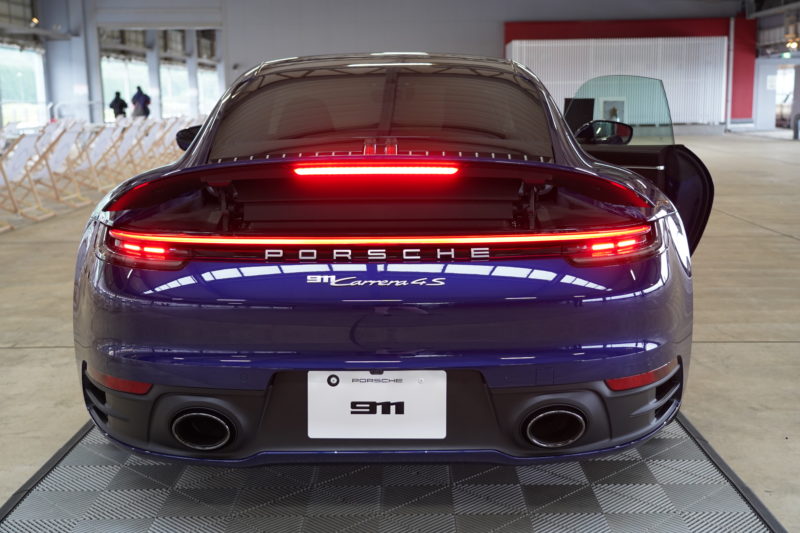
The most distinctive feature of the 992’s rear is the single-piece tail light strip. Inspired by the classic 964 and 930 rear garnish, it’s made of LEDs and lights up with perfectly uniform brightness from end to end when switched on.
Alex told me that it was quite challenging to find a supplier capable of producing such a large component with completely uniform brightness across its entire length. In fact, there is only one supplier in the world who can achieve this, and Porsche adopted their technology. That was an interesting behind-the-scenes story.
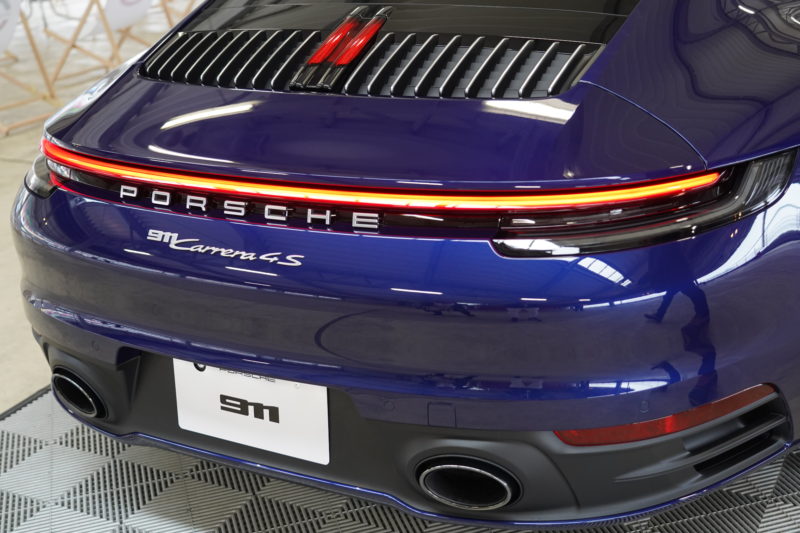
The rear spoiler is larger than the previous generation’s, rising at 90 km/h and adjusting its angle further above 150 km/h to enter a performance position. Also, the front cooling air flaps open and close steplessly depending on temperature, load, and speed, optimizing fuel efficiency and aerodynamics at high speeds, and they also work in conjunction with the Wet Mode.
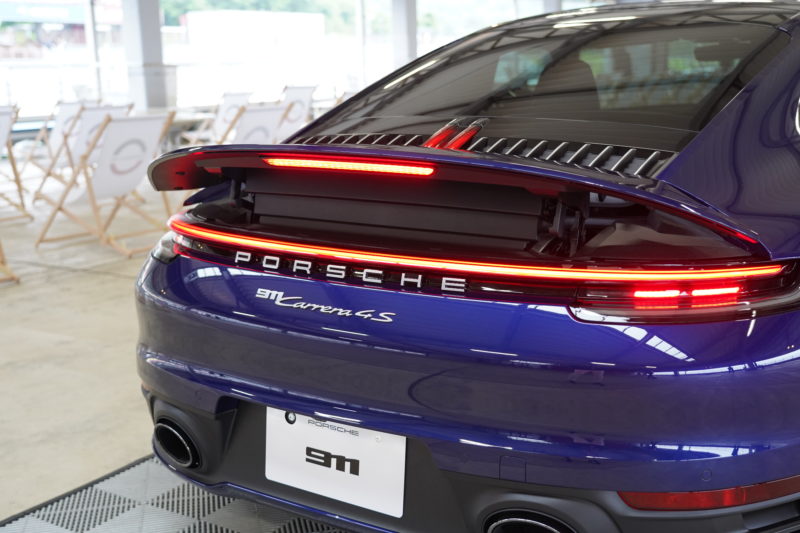
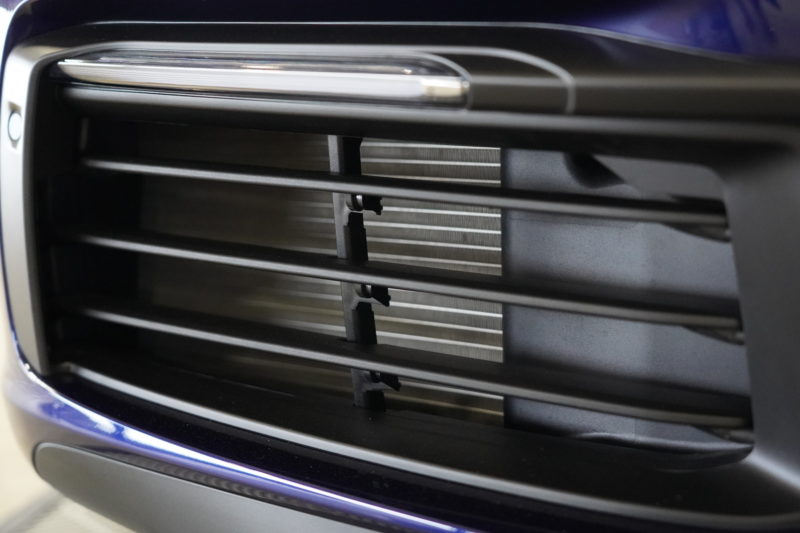
There were also challenges with the high-mounted stop lamp during development. According to U.S. regulations, the high-mounted stop lamp must be a single light source. However, as you know, this lamp is designed to resemble the pause button on audio devices, so the center does not light up. This would normally fail the regulation.
The U.S. inspection is done mechanically by camera, but Porsche managed to pass by carefully selecting and positioning reflectors that make the gap appear while still meeting the requirements.
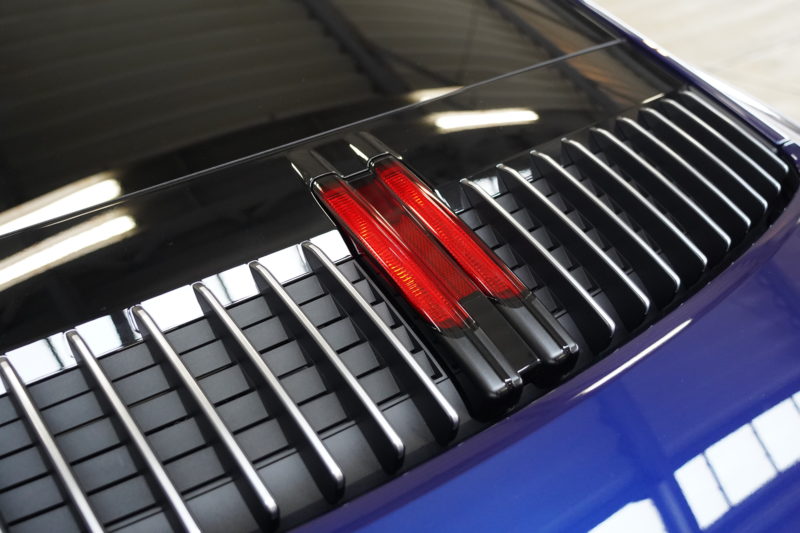
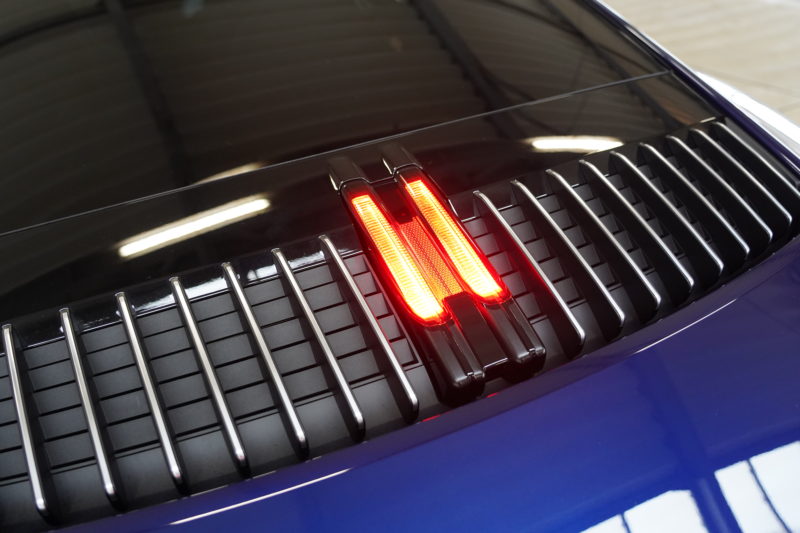
Front
Looking at the front, there’s a vibe reminiscent of the air-cooled 911s. Alex said the shape of the hood was inspired by the design of the 964 and other air-cooled models, with less rounding and a slightly more angular form.
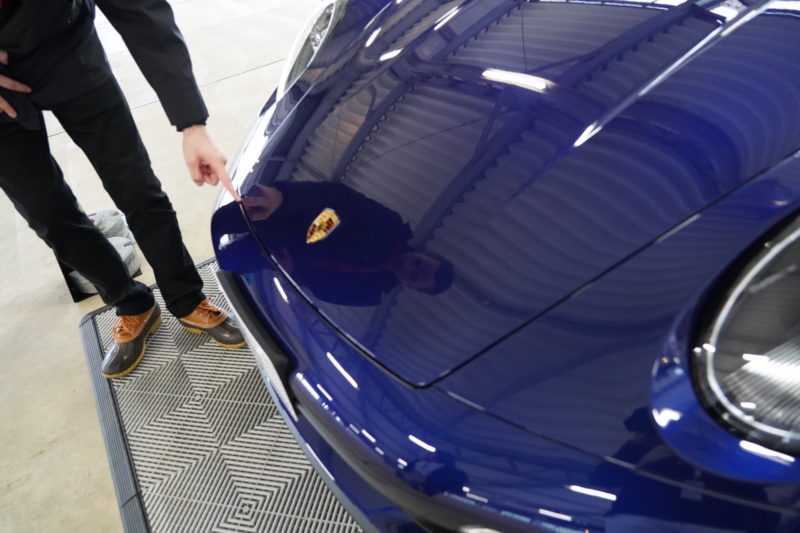
The classic 911 front fender bulge, sometimes compared to a woman’s leg, remains on the 992. However, according to Alex, the peak of the fender is slightly flattened and is not a simple curve. This flatness extends all the way to the headlights, which is why the headlights are no longer simple ovals but have a slightly unique shape.
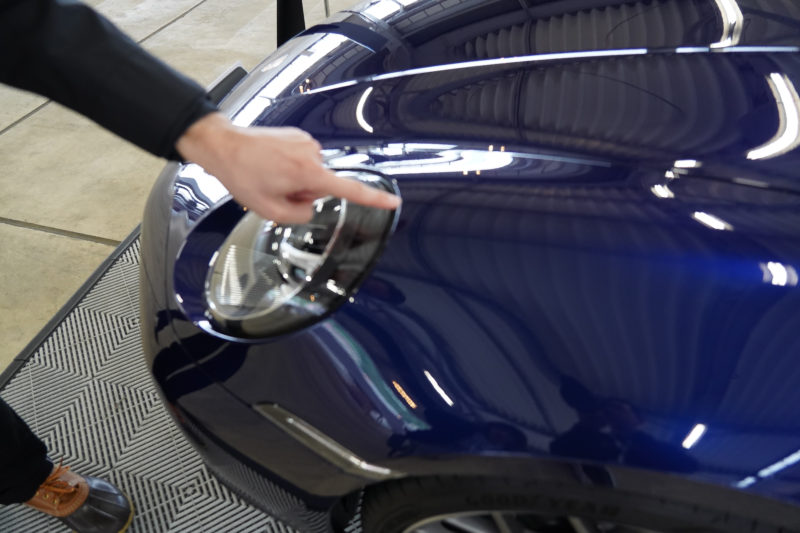
Sorry for the slight blur
This display car is equipped with the optional LED Matrix Headlights. Like the Panamera, you can see the Porsche logo inside the lights, which looks very cool. When the lights are on, the lines inside reflect light beautifully, creating a stunning light pattern.
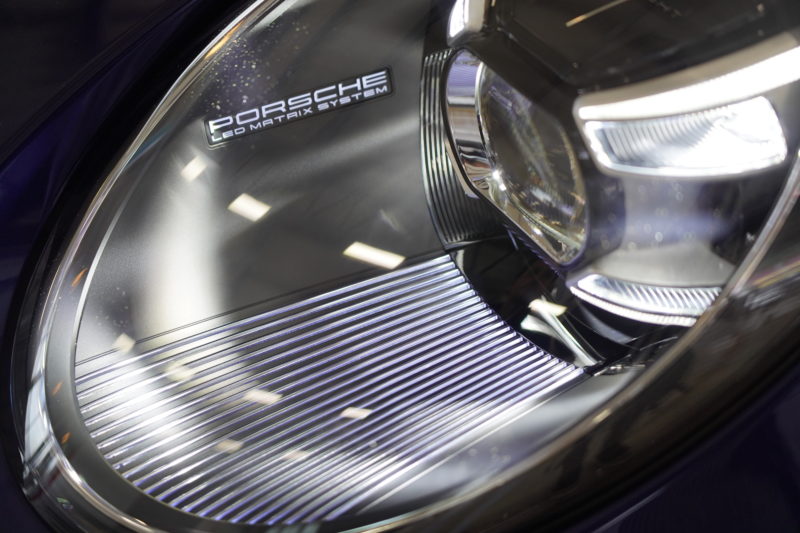
It’s a bit hard to see in photos, but inside the front fender is a sensor for Wet Mode. According to Alex, unlike conventional cars that use a raindrop sensor on the windshield, this sensor detects rain closer to the tires, allowing it to respond even when the road is still wet after rain has stopped.
By the way, Wet Mode detects rain and notifies the driver via an indicator that it’s recommended, but whether to activate Wet Mode is ultimately up to the driver. This priority on driver choice is very Porsche.
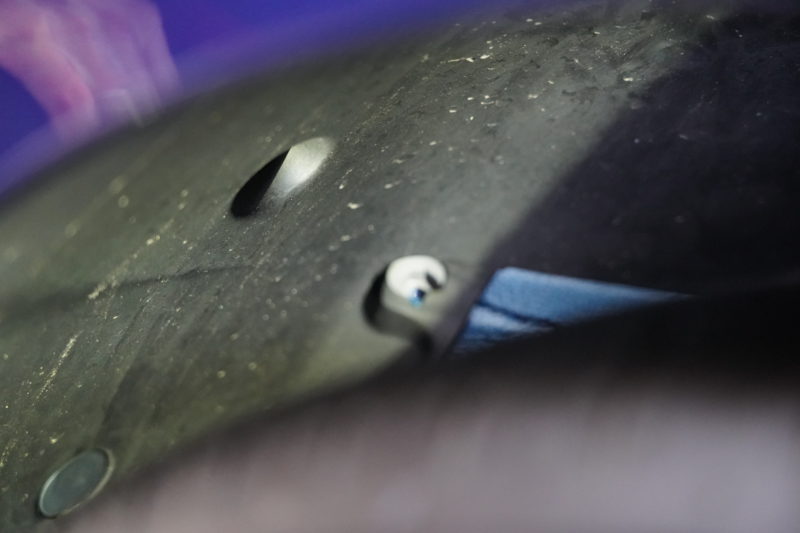
The round object at the bottom left is the sensor, though it’s hard to see
Interior
I also sat inside to get a feel for the interior. First, the scent inside the car, which I personally care about, smells just like the 911 from the 991 generation. It’s hard to describe, but the 911 scent is different from the Boxster’s and is a unique, pleasant aroma I really like.

Overall, it feels like a “mini Panamera.” However, the horizontal linear design gives it a hint of the air-cooled era’s interior vibe. I especially like the center switches—they’re a bit retro but very intuitive to use.
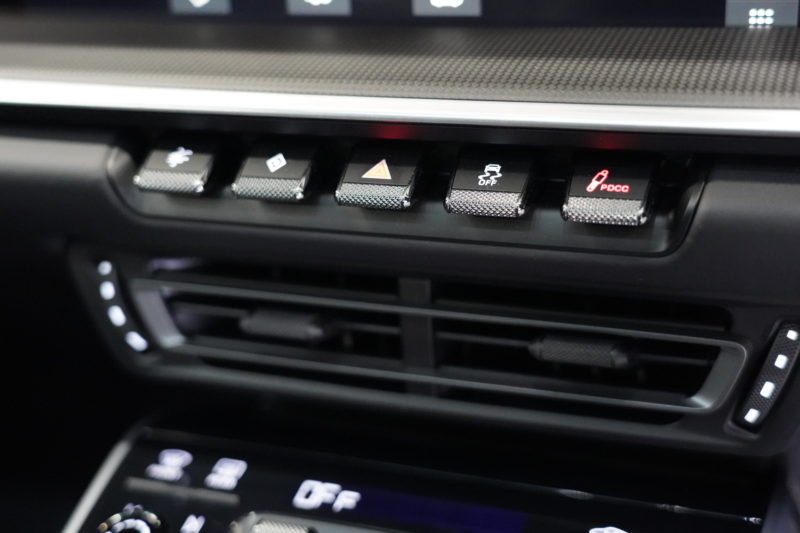
The PCM screen is larger, and the menu layout and basic operation follow the Panamera’s. When I first got my Panamera, I was a bit confused, but now I find it very convenient. If you customize the HOME screen to your liking, you probably won’t have any issues.

Does the Japanese Model Have a GPF?
After Alex explained various exterior and interior details, I asked a question I was curious about:
“Does the Japanese-spec 911 come with a GPF (Gasoline Particulate Filter)?”
“No, it doesn’t. So you can enjoy a great sound!” (Note: As of August 4, 2021, it seems the 2021 model does have a GPF in Japan.) Just hearing that made me even more interested in the 992.
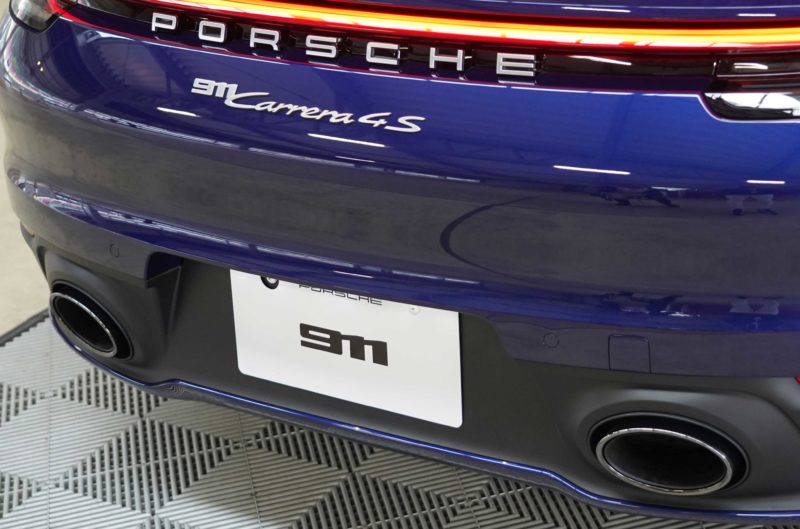
“If a manual transmission version is released, is there a chance it will come to Japan?”
“Probably difficult in Japan. That’s due to fuel efficiency regulations and the fact that PDK is more popular than manuals here. However, it might come as a limited edition.”
He didn’t specify what “limited edition” means, but I guess he’s referring to special models like the GT3.
Finally, I had the chance to record the startup sound of the new 992. I only had my iPhone with me, so the sound quality isn’t great, but I hope you can get a feel for it. (The real sound is much more powerful.)
Later, I also saw the 992 doing demo runs at Fuji Speedway alongside the GT3. Of course, the GT3 was louder, but the 992 also had a very nice sound.
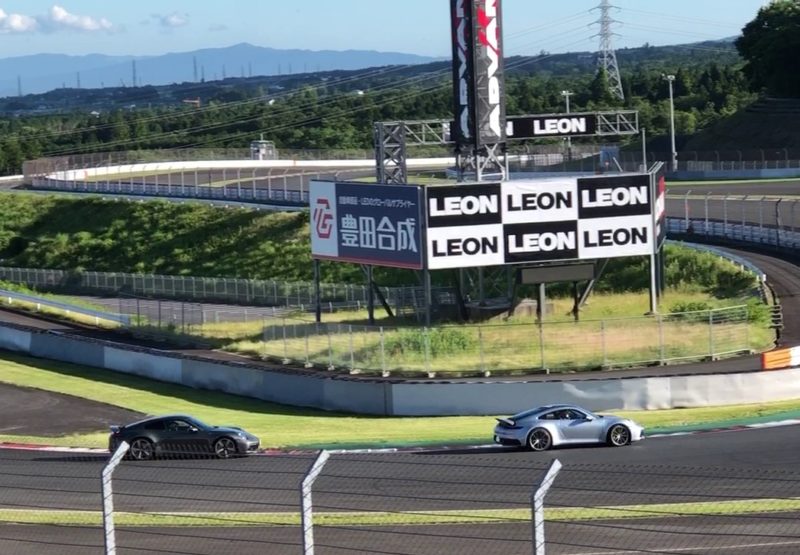
That’s all for now. I learned a lot of valuable things and will share more when I get the chance.
In any case, Porsche’s attention to detail in development is incredible. As someone who provides products and services to customers in business, I found it very educational and inspiring.
Thank you very much, Alex!
このブログが気に入ったらフォローしてね!


Comment ( 0 )
Trackbacks are closed.
No comments yet.